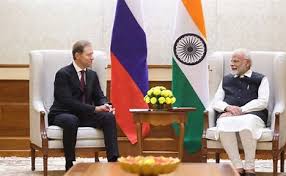Scoring one of his biggest foreign policy triumphs, US President Barack Obama has sealed the Trans-Pacific Partnership (TPP), one of the largest free trade agreements in history. Negotiators from 12 nations along the Pacific Rim inked the TPP agreement on October 5. The 12 nations include Australia, Brunei, Canada, Chile, Japan, Malaysia, Mexico, New Zealand, Peru, Singapore, US, and Vietnam.
The deal is expected to boost trade among the dozen nations having a combined population of 800 million and covering 40 percent of the global economy. The landmark trade deal would not only strengthen economic ties but also strategic relationships in the Asia-Pacific region. “The TPP’s significance is not just economic; it’s strategic — as a means of embedding the United States in the region, creating habits of cooperation with key partners, and forming a foundation for collaboration on a wide range of broader issues,” U.S. Trade Representative Michael Froman said.
The TPP is intended as a platform for regional economic integration and designed to include additional economies across the Asia-Pacific region. It includes new elements that seek to ensure that economies at all levels of development and businesses of all sizes can benefit from trade. TPP promotes innovation, productivity, and competitiveness by addressing new issues, including the development of the digital economy, and the role of state-owned enterprises in the global economy. It facilitates the development of production and supply chains, and seamless trade, enhancing efficiency and supporting the goal of creating and supporting jobs, raising living standards, enhancing conservation efforts, and facilitating cross-border integration, as well as opening domestic markets.
The deal reduces tariff and non-tariff barriers across substantially all trade in goods and services and covers the full spectrum of trade, including goods and services trade and investment, so as to create new opportunities and benefits for businesses, workers, and consumers.
Asia Pivot
TPP was initially started with the intention of countering the rise of China economically and militarily in the region. The US was a late entrant and convinced Japan to join the partnership to strengthen the group. China has expressed interest in joining TPP.
Ever since Mr Obama took office as President in his first term, the pivot to Asia has been the focus. After the 2008 global financial crisis and the wars in Afghanistan and Iraq earlier had dented the global standing of the US internationally, especially in Asia-Pacific. The rise of China in the region and its influence sparked major concerns in the US about its own future in the region. Due to the crises in West Asia and Eastern Europe, the concentration of the Obama administration was largely diverted to these regions and could not implement the much touted pivot to Asia. This is where the TPP becomes important for US to consolidate its position in Asia-Pacific.
Many foreign policy analysts and scholars believe the deal puts the US in a pole position as a leader in defining how trade will be concluded in this region and reinforces its leadership in setting rules for global best practices. The recent rise of alternative global financial institutions such as Asian Infrastructure Investment Bank (AIIB) and New Development Bank (NDB) endorsed by China had threatened to diminish the US dominance in the international financial system. “When more than 95 percent of our potential customers live outside our borders, we can’t let countries like China write the rules of the global economy,” Mr Obama said.
The deal comes at an ideal time for the US to capitalise on its growing economic recovery and reassert its position globally despite being written off as a declining power in a multi-polar world. The geopolitics of the deal is a major selling point for Obama administration domestically at a time when many leading Presidential aspirants for the 2016 elections are opposed to the deal.
What’s in it for India?
The deal could have an impact on India’s foreign trade as it would reduce trade barriers between US and the other TPP countries. It could hit India’s exports as it could face some trade diversion and foreign investment diversion as a large portion of India’s exports is in services and the reduction in trade barriers between the TPP countries could replace India’s exports with services trade within TPP. Attracting foreign investments into India will be become less lucrative due to the complex tax laws and the TPP countries could become more lucrative destinations for foreign investments as this deal makes it a level playing field for TPP countries with many taxes being eliminated.
India cannot afford to isolate itself from a mega trade deal like TPP which comprises 40 percent of the global market. Refuting charges of being left out, India’s Minister for Commerce and Industry Nirmala Sitharaman had recently said, “We are very actively engaged in ARSEP (Asean Regional Comprehensive Economic Partnership) which consists of ASEAN and ASEAN FTA countries. So we actually in ARSEP are moving faster along with other members.”
Author Profile
- India Writes Network (www.indiawrites.org) is an emerging think tank and a media-publishing company focused on international affairs & the India Story. Centre for Global India Insights is the research arm of India Writes Network. To subscribe to India and the World, write to editor@indiawrites.org. A venture of TGII Media Private Limited, a leading media, publishing and consultancy company, IWN has carved a niche for balanced and exhaustive reporting and analysis of international affairs. Eminent personalities, politicians, diplomats, authors, strategy gurus and news-makers have contributed to India Writes Network, as also “India and the World,” a magazine focused on global affairs.
Latest entries
 India and the WorldJuly 26, 2025MPs, diplomats laud Operation Sindoor, call for national unity to combat Pakistan-sponsored terror
India and the WorldJuly 26, 2025MPs, diplomats laud Operation Sindoor, call for national unity to combat Pakistan-sponsored terror India and the WorldJuly 25, 2025When Fire Ends, Diplomacy Begins
India and the WorldJuly 25, 2025When Fire Ends, Diplomacy Begins India and the WorldJuly 16, 2025Operation Sindoor and its Aftermath: India’s Successful Diplomatic Outreach
India and the WorldJuly 16, 2025Operation Sindoor and its Aftermath: India’s Successful Diplomatic Outreach India and the WorldJuly 11, 2025IAF and Operation Sindoor: A New Paradigm in Warfare
India and the WorldJuly 11, 2025IAF and Operation Sindoor: A New Paradigm in Warfare









